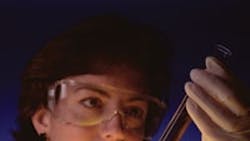Lewis Maltby insists drug testing is a waste of money and doesn't make the workplace any safer. His belief runs contrary to pre-employment policies most large corporations and manufacturers have adopted over the past 20 years or so.
Maltby is president of the National Workrights Institute and author of a newly released book called "Can They Do That? Retaking Our Fundamental Rights in the Workplace." He claims employers have been duped into believing that spending money on drug screens is a wise investment. "If a drug test tells you someone was coming to work stoned, it would be great in helping safety and productivity, but it doesn't tell you that," says Maltby, a former manufacturing executive and founder of the American Civil Liberties Union's National Workplace Rights Office. "It just tells you that the employee ingested some amount of a particular drug at some undetermined point in time."
Maltby says on-the-job impairment tests are more effective alternatives to drug testing because they measure the worker's current state of alertness (see Impairment Tests as a Drug-Screen Alternative).
Of course, drug-testing advocates contend substance-abuse screening is a cost-effective way to reduce on-the-job accidents, improve productivity and cut absenteeism.
| By The Numbers 40 Percentage of industrial fatalities linked to alcohol use and alcoholism |
Do the Tests Work?
But Maltby, who worked for 13 years as general counsel and executive vice president for manufacturer Drexelbrook Controls Inc., says the tests have many flaws, including job candidates' ability to "clean themselves out" beforehand and the inability to detect intoxication on the job. "What really happens is that bright, young scientist who you want to hire who smokes pot on Saturday was smart enough to drink beer [instead] for two weeks before the drug test because he wants to work for the company," Maltby says.
That's if an employer opts for the more common urine test. More companies are looking to hair tests as a cheat-proof option, says Barry Sample, director of science and technology for the Employers Solutions division at drug-screening provider Quest Diagnostics Inc. Hair tests are effective at detecting repetitive use in employees over a longer timeframe, as far back as 90 days, he says.
A study released in November by Quest shows cocaine and methamphetamine positivity rates are nearly 10 times higher in hair tests than they are in urine samples. There is a drawback, though. Hair tests are nearly double the cost of urine screens, Sample says, and some people, including Maltby, have questioned the test's accuracy. Sample disputes the reliability concerns, saying all specimens go through a rigorous process that involves strict chain-of-custody procedures and confirmatory retests for any positive result.
Another potential concern is the legality of certain drug-testing procedures. State laws can vary quite a bit, putting employers at risk if they don't do their homework, says Susan North, an attorney specializing in employment law at the LeClairRyan law firm. For instance, most states allow pre-employment drug screens but others don't permit reasonable-suspicion or random post-employment testing unless there's an accident on the job. Then there's uncertainty regarding how newer policies, such as the Genetic Nondiscrimination Information Act (GINA) and the legalization of medicinal pot in some states, could impact drug-testing laws and procedures, North says. GINA, which went into effect in November, prohibits discrimination by health insurers and employers based on individuals' genetic information.
Even so, Maltby says the tests don't achieve their intended goal. "Nobody wants to hire a crack addict, but there are so few crack addicts in the working population they're not worth looking for," he says. "...People who use drugs and work are recreational pot smokers, and recreational pot smokers perform on the job just as well as people who drink beer on Saturday night. That's the problem."
See Also
About the Author
Jonathan Katz
Former Managing Editor
Former Managing Editor Jon Katz covered leadership and strategy, tackling subjects such as lean manufacturing leadership, strategy development and deployment, corporate culture, corporate social responsibility, and growth strategies. As well, he provided news and analysis of successful companies in the chemical and energy industries, including oil and gas, renewable and alternative.
Jon worked as an intern for IndustryWeek before serving as a reporter for The Morning Journal and then as an associate editor for Penton Media’s Supply Chain Technology News.
Jon received his bachelor’s degree in Journalism from Kent State University and is a die-hard Cleveland sports fan.
